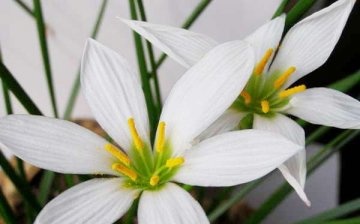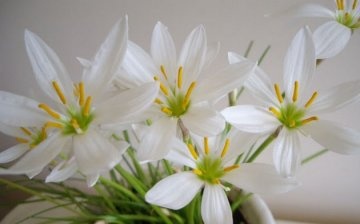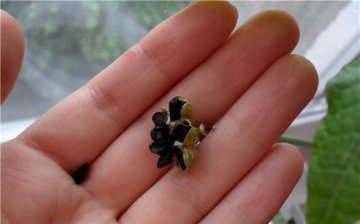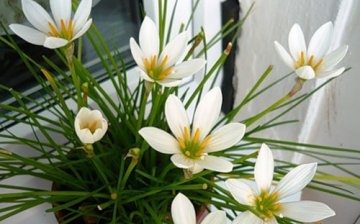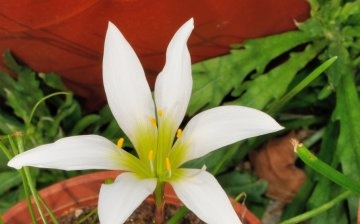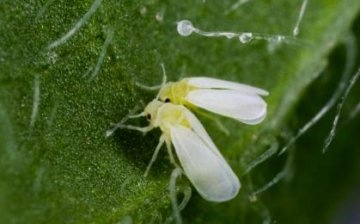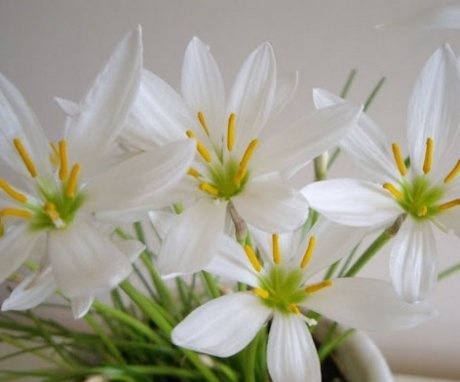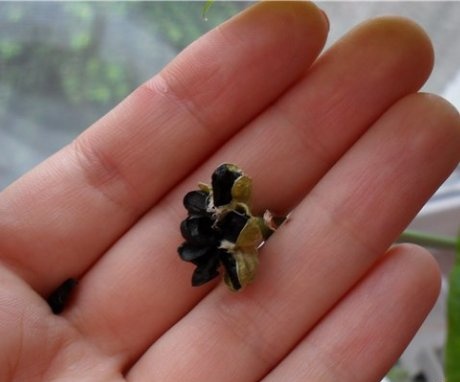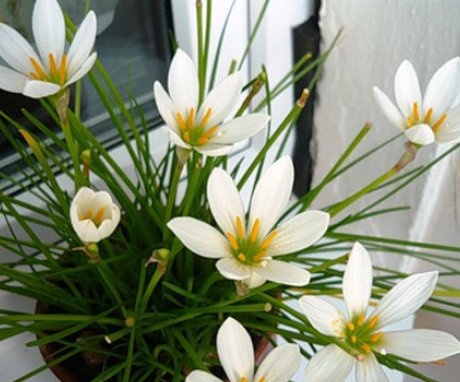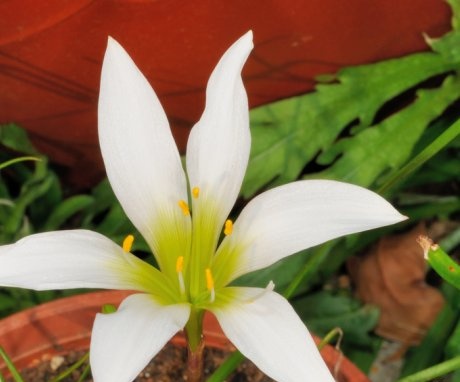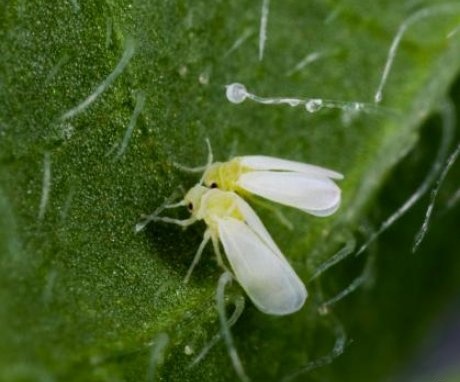How to grow white Zephyranthes correctly?
The sonorous name of the flower - "Zephyranthes" was popularly renamed simply "Upstairs". In addition, it has other names: Rain flower, Daffodil home, water lily. The plant received such names due to its rapid growth during rainy days. In a short time, the first leaves appear, and after 1-2 days the bush is replete with snow-white flowers. He comes from Central and South America, from the amaryllis family.
Content:
- Zephyranthes: description
- Breeding methods and planting
- Home Care Tips
- Transfer
- Diseases and pests - control and prevention
Zephyranthes: description
The plant is a perennial with a bulbous root system. The leaves of the home daffodil are radical, narrow, elongated, can stretch up to 40 cm in height, dark green in color. The flowers of the plant are predominantly white, but may differ in color (due to the varieties of varieties). The diameter varies from 5 cm to 8 cm. Solitary - one peduncle on one arrow, in appearance like a six-pointed star. They are characterized by stretching up to 30 cm in height.
Period flowering each bud lasts only 2 days, but after wilting, a new flower immediately takes its place.
This process of constant replacement of inflorescences contributes to a long riot of the snow-white crown. Root system represented by an onion. It can be from 1 cm to 5 cm in size. The head is rounded, covered with poisonous scales. It is because of them that it is rarely damaged by diseases and pests.
In nature, there are about 80 different species. The following specimens are suitable for home breeding and cultivation:
- White - a narrow, long leaf, up to 50 cm high, the inflorescences resemble a white funnel, in diameter they reach no more than 8 cm.A riot of colors is observed from mid-summer to mid-autumn. The favorable temperature for successful wintering is not lower than + 120C. It was first brought to Russia from Argentina.
- Golden - yellow tone, leaves can grow up to 30 cm high. Flowering occurs in early December to late January. It was imported from Peru.
- Large-flowered - green plumage reaches up to 40 cm, the peduncle shoots up to 35 cm.The flower is pink or pink-red, the largest of the proposed ones is up to 10 cm in diameter. Inside the bud, the stamens are bright orange. It begins to bloom in early spring and pleases with its magnificent appearance until mid-summer.
- Powerful - Origin: Argentina and Brazilian forests. It produces stems up to 30 cm, buds of a gentle pink color up to 9.5 cm in volume, there is no smell. Pleases with a beautiful view from early summer to late autumn.
Thus, Zephyranthes is an interesting plant with several common species. It blooms mainly for 2 months and has a rest period that varies depending on the variety.
Breeding methods and planting
Reproduction takes place in two ways - bulbs and seeds... Seeds with one distinctive feature - they have a very low germination capacity.
To grow an shoot from a seed, it should be placed in moist, fertile soil immediately after harvest.
The planting material is slightly deepened, by only 0.5-1 cm.The distance from each seedling should be at least 2 cm.Cover the top with a film or plastic bag, and you can also put glass. This process provokes artificial greenhouse conditions. The container with crops must be placed in a dark place, without direct sunlight.
From time to time you need to open the pot, ventilate and water the ground. The temperature for successful germination should not drop below +22 C. Such a seedling blooms only for 3-6 years of life, depending on the conditions of development and growth.
The easiest way to get several full-fledged plants is to divide by children (one mother's head can form up to 15 children):
- When transplanting an old bulb, all stepsons growing nearby are disconnected from it. The separation is carried out carefully so as not to damage a single head of the young.
- For planting, prepare the soil (a mixture of peat, turf, humus and sand). Drainage is laid out at the bottom of the pot.
- The heads are laid with the roots down, and the base, from which the greens will subsequently grow, is recommended to be left on the surface, without falling asleep with earth.
- Then pour abundantly the water that has flowed through the ground - remove from the pallet, put in the shade. The main thing is to make sure that the earth does not dry out.
Thus, the reproduction method must be chosen from the possibilities of planting and further development and care of a young bush.
Home Care Tips
Because Zephyranthes are native to the tropics, they need abundant light. It grows well both on the east and west sides and on the south. Not afraid of direct sunlight during midday periods. In summer, it is best to put a flowerpot with a bush on the balcony, where there is fresh air. If there is a small area, then it is better to transplant it into open ground.
How to properly care for a houseplant:
- Water often, but in moderation. For indoor watering, warm, sun-dried water is suitable. During the dormant period, usually from September to the end of October, watering is reduced or completely removed. The pot is placed in a dark, dry, cool place. An indicator of the beginning of rest is wilting and shedding of leaves. The optimum temperature for rest is + 8 + 14 C.
- Top dressing should be applied to the ground 1 time in a 10-day period from the moment of the first ejection of green plumage and until the complete discharge of peduncles.
In order for the plant to develop well after feeding, there are a number of specific rules:
- an excess of useful fertilizers provokes the opposite effect - it can die
- during the dormant period, feeding is not needed
- for bushes growing in winter, the amount of additives is reduced. Such a measure is necessary due to the lack of proper lighting and insignificant growth of the bush.
- mineral supplements are not recommended in the heat
- during feeding, it is required to ensure that the solution does not get on the leaves or peduncles - it will burn
- young stock must be diluted with water
- before watering with nutrients, the soil should be well watered
Liquid works well mineral fertilizers for indoor flowers (Kemira Suite, The Merry Flower Girl, Agricola). You can also add, but control the process organic additives... Excessive feeding chicken droppings tends to burn the bulbs, which will provoke rotting. Useful ashdiluted with water (1 tablespoon per 1 liter). Perfectly affects the fermented mulleindiluted with liquid (1:10). Thus, following the simple rules of care and maintenance, you can delight with new inflorescences for a long period of time.
Transfer
The transplant is carried out once a year, in March or autumn after complete flowering, when the mother plant has shared and filled the entire territory of the flowerpot with children. This is evidenced by many sprouted shoots. The division takes place as follows: the onion with daughters-delenki is removed from the ground. The children are separated from the mother with a sharp instrument. The resulting wounds are sprinkled with ash or crushed charcoal.
The transplant does not take much time and effort if done correctly and accurately.
For transplanting, you need to take a small, low pot. It should be disinfected by dipping it for a while in a solution of potassium permanganate. Before planting, it is necessary to prepare the nutrient soil so that it is loose and airy. Mix in equal proportions garden soil, peat, turf, humus and sand. Or you can buy a special ready-made substrate for indoor plants.
Expanded clay or brick is placed at the bottom. Having filled the flowerpot half with earth, you need to place one or more (up to 10-12 pieces) bulbs. Then add soil to the top and water abundantly.
Diseases and pests - control and prevention
Zephyranthes white is not often affected by various diseases or pests. The greatest harm is caused by an excessive abundance of moisture. If it is noticed that the shrub has begun to wither, it is urgently necessary to dig it up and inspect it for rot or mold. Then transplant to a new place with fresh soil.
If not properly cared for, the upstart can be attacked by the following pests:
- Scabbard - dark spots appear on the leaves, which are covered with sticky sap. Greens turn pale, become unnaturally shiny, flowers dry up and fall off. The bush should be placed under a strong stream of water, remove the insect from the sheets with cotton wool or a disc soaked in 70% alcohol or moistened with soapy water.
- Whitefly - a small insect appears on the plant, laying numerous larvae. They are placed on the inner surface of the leaf, make paths in the structure, and suck the juice from the stems. The greens dry out and disappear. For treatment, you need to reduce watering, every 3 days, irrigate with products containing permethrin. Apply Decis, Actellic. Transplant from a familiar place into a new substrate, previously treated with boiling water and a solution of potassium permanganate.
- Amaryllis bug - pieces of fluff or cotton wool are observed on the bush. All components of the shrub fall off. The first step is to manually remove the insect, remove the infected heads. Spray 3 times in 10 days with infusion of garlic, tobacco or calendula tincture (alcohol).
- Spider mite - greens are covered with cobwebs, dry up and fall off, small specks appear on the surface of healthy green feathers. Wipe the leaves with Actellik's solution (1 ml per 1 liter of water). Wash with soapy water, put under a strong stream of warm water, do not be zealous with watering. Replace the soil as for whitefly.
Thus, careful monitoring of the state of health zephyranthes will allow you to identify the initial signs of a disease or pests and eliminate them at first.
More information can be found in the video:



